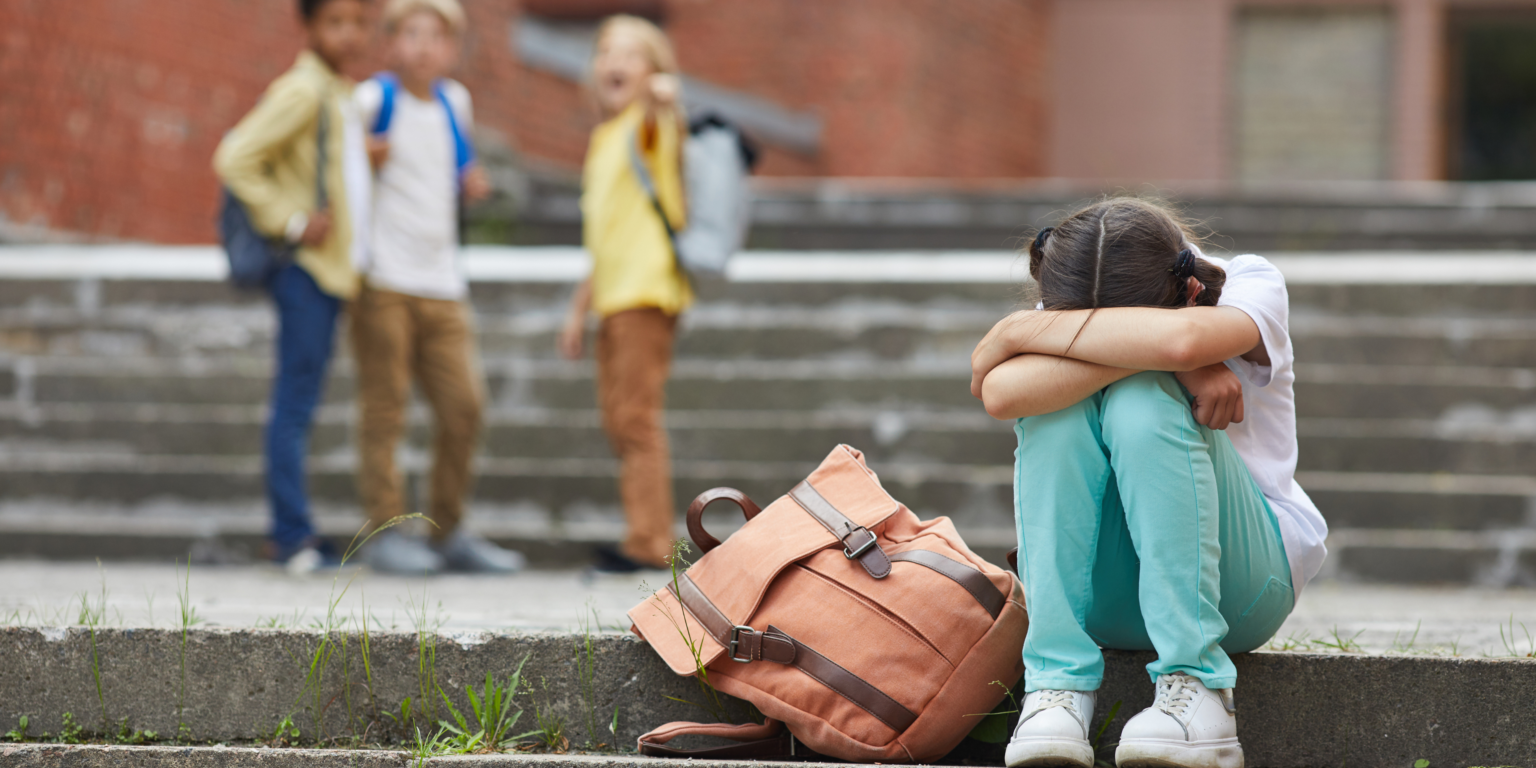Bullying, Trauma and Autism

The most common traumatic social experience for Autistic individuals is bullying. The social isolation experienced by many Autistic individuals means they are at greater risk of being the target of bullying and, subsequently, deeper traumatic stress, as social support has been identified as an integral aspect of recovery from psychological trauma (Ozbay et al., 2007). We also know that bullying is experienced by all Autistic children, including Autistic children at special schools (Van Roekel et al., 2010).
Bullying
We recognise that Autistic individuals are more likely to suffer peer victimisation and bullying than their non-autistic peers. However, such experiences are seldom considered when conceptualising trauma, specifically complex trauma resulting from repeated traumatic experiences. A study by Law et al. (2013) found that over one month, 66% of Autistic children were bullied and that bullying frequently led to emotional trauma and physical injury. Schroeder et al. (2014) found that 40% of Autistic children experienced daily victimisation, with an additional 33% experiencing victimisation 2-3 times a week.
Many types of bullying are frequent experiences for Autistic people. These include:
- Verbal, such as obscenities, sarcasm, degradation, mocking, and humiliation with comments such as “You are so stupid”, name calling and the implication that being Autistic is despised by peers.
- Physical with the experience of pain, such as pushing, shoving, tripping downstairs, hitting and poking.
- Emotional and psychological, such as rumours and gossip and practical jokes, for example shoelaces tied together, mocking and mimicking, knocking food or objects from the child’s hands, and being provoked to retaliate in anger. Being marginalised and unprotected by peers in a social group, Autistic children are vulnerable to abuse by peers, and their intense emotional reaction only encourages the child who bullies (Cappadocia et al., 2012).
- Intimidation, including threats, coercion and accusations, as well as taunting.
- Sexual, including unwanted sexual touching and gestures, and being set up to be embarrassed.
- Cyberbullying includes being excluded from online groups, online impersonation, social media gossip and insults and embarrassing photos and videos. The cyber victimisation of Autistic children has recently been explored by research (Wright et al., 2018). Unfortunately, cyberbullying is becoming more frequent for the current generation of children, and schools and parents have limited ability to prevent the consequences, which can contribute to suicidal ideation, as illustrated in the following quote from Life on the Autism Spectrum: A Guide for Girls and Women (2016) by Karen McKibben: 'My cyberbullies were relentless and would never leave me alone. I wanted to kill myself because I felt there was no way to get away from them, but I was scared I’d fail because I was such a pathetic loser. I never felt safe anywhere. So I would cut myself in places that no one could see. The physical pain never matched the emotional pain I felt with what the bullies would say to me.' Home may not be a sanctuary from cyberbullying and bullying from siblings and extended family members.
- Rejection such as peer shunning, not being invited to parties and being picked last for being on a team.
- Damaged possessions, including destroying homework, work and possessions including damaging clothing.
- Restraint such as being held down and tortured or trapped within a confined space by peers and being restrained by school, work and/or medical staff when distressed and overwhelmed.
Disclosure of Bullying and Autism
Autistic individuals may be reluctant to disclose incidents of bullying as disclosure will involve re-experiencing the event, and it is easier to deny them. Many Autistic people also have Alexithymia, which is difficulty explaining thoughts and feelings in speech, which means it is difficult to coherently and eloquently explain the event and their thoughts and feelings.
Consequences of Bullying for Autistic Individuals
An Autistic child may ruminate on why they were targeted and not other students, the reasons why someone would deliberately cause them distress and how to cope with relentless bullying. We now know that bullying is traumatic for Autistic children, but being bullied is also recognised as a contributory factor to using camouflaging, that is suppressing Autistic characteristics at school and copying peers. Autistic children are also motivated to use camouflaging to make friends and feel included. The degree and consequences of bullying may only become apparent when there are mental health issues, including depression, suicidality, self-harm, anxiety and eating disorders. Clinically, we see these mental health issues stretching long into adulthood, and reports that bullying did not stop after high school but continued into the workplace.
Invalidation Trauma and Autism
Autistic researcher Gordon Gates (2019) has described “invalidation trauma” as arising from chronic invalidation and autism stigma within society. Gates argues that chronic invalidation can be as harmful as other traumatic experiences. Although trauma is often framed in terms of a terrorising event, it is the perceived physical and / or psychological threat to personhood and residual self-protection that underlies much of the suffering involved. Chronic invalidation can lead to an over-sensitive danger alarm in the mind/body waiting to be activated by the smallest trigger.
Feeling judged and being negatively evaluated and rejected by peers, with the clear message ‘you are not one of us’ and coercion to conform (ableism), amplifies emotional regulation issues and creates the stigma of being different and not being accepted. Trauma can then be perpetuated by self-beratement and complicated when it involves repeated exposure over time and evolves into complex trauma and dissociation, an inability to be present now. Thus, stigma is a source of trauma for Autistic individuals.
Treatment of Trauma for Autistic Individuals
There are primarily two treatments for Autistic individuals who have experienced trauma. The first is trauma-focused CBT, which includes emotion regulation, exposure therapy, cognitive restructuring, a safety plan and programme generalisation and maintenance (Andrzejewskil et al., 2024; Stack & Lucyshyn, 2019). The second is eye movement desensitisation reprocessing (EMDR), which has been a successful therapy for trauma in Autistic adults (Lobregt-van Buuren et al. 2019) and has been used with Autistic children (Clarke & Darker Smith, 2024; Van Diest & Marguerite, 2022) with adaptation to accommodate the characteristics of Autism.
Where to from here
To further understand the association of autism with trauma, we are developing two brand new courses, Trauma and Autistic Children and Teens and Trauma and Autistic Adults. Within these courses, you will learn:
- Why the effects of trauma can be missed in autistic people, and autism can be missed in traumatised people
- About the types of events that can cause trauma for autistic people
- The recent research on the association of trauma and autism.
- The similarities and differences between autism and trauma
- The impacts of trauma on an autistic person.
- Strategies that can help the person, their partner and/or family
- When you should seek professional help, and what types of assistance are available to help resolve and heal from trauma/s
Whilst the themes and content description for these events are similar, please note that we have divided the content by age because the research, case examples, impacts, types of support and strategies for each age group differ. As a result, the events are quite different from each other.
Recommended Reading
Folger and Phelps Eds. Trauma, Autism and Neurodevelopmental Disorders Springer 2018
Morgan and Donahue Living with PTSD on the Autism Spectrum Jessica Kingsley Publishers 2021
Gates Trauma, Stigma and Autism Jessica Kingsley Publishers 2019
References
Andrzejewskil et al 2024) Examining Therapeutic Alliance Among Autistic Youth and Their Caregivers throughout Trauma-Focused Cognitive Behavioral Therapy. Paper presented at INSAR, Melbourne, May 2024
Berkowitz, (2022). Autism, 26(8), 1987-1998
Bernier et al. (2024). The Intersection Between Autism and Trauma. Paper presented at INSAR, Melbourne, May 2024
Cappadocia et al. (2012) Journal of Autism and Developmental Disorders 42
Clarke & Darker Smith (2024) Neurodiversity-affirming EMDR therapy with Autism and ADHD. Chapter in: The Oxford Handbook of EMDR, Oxford Library of Psychology
Dahiyal et al. (2024). Supporting Interdisciplinary Care for High-Needs Individuals at the Intersection of Intellectual/Developmental Disabilities and Mental Health. Paper presented at INSAR, Melbourne, May 2024
Haruvi-Lamdan, Horesh and Golan (2018). Psychological Trauma: Theory, Research, Practice and Policy 10, 290-299
Hoover & Romero (2019). Journal of Autism and Developmental Disorders 49 1686-1692
Kerns et al. (2015). Journal of Autism and Developmental Disorders 45
Kerns et al. (2022) Autism 26.
Law et al. (2013) Journal of Developmental and Behavioral Pediatrics
Lim and Young (2024) Investigating the Relationship between Autism and Post-Traumatic Stress Disorder in Young Adults. Paper presented at INSAR, Melbourne, May 2024.
Lobregt-van Buuren et al (2019) Journal of Autism and Developmental Disorders 49,
Schroeder et al. (2014). Journal of Autism and Developmental Disorders 44
Stack & Lucyshyn (2019). Journal of Autism and Developmental Disorders 49
Van Diest & Marguerite (2022). Journal of EMDR Practice and Research 16.
Van Roekel et al. (2010). Journal of Autism and Developmental Disorders 40
Wright et al. (2018). Journal of Child and Adolescent Trauma 11


